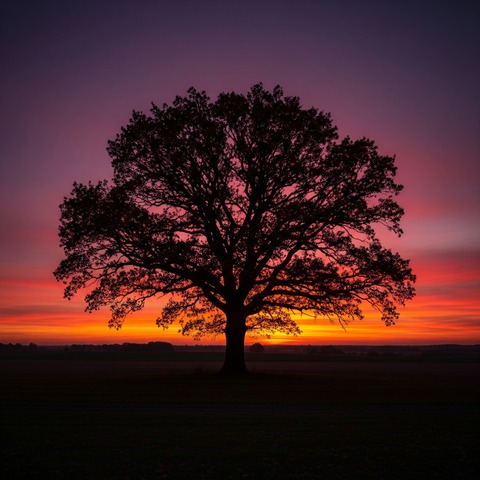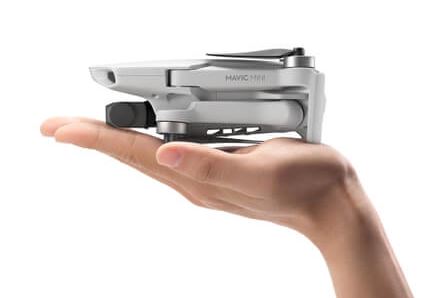Stop Auto Mode! Understand the Exposure Triangle for More Dramatic Photos
Have you ever felt like the photos your camera's auto mode produces are flat and lacking in "oomph"? You're not alone! Auto mode is convenient, but it often comes at the expense of your creative control. It's time to take full control of your shots and create truly dramatic photos. The key lies in understanding exposure triangle.
The exposure triangle is a key foundation in photography. Mastering it will open the door to a world of limitless creativity, allowing you to produce photos with moodYou can get the details and visual effects that you want. So, leave the Autoand let's dive into the secrets behind exposure triangle to more dramatic photos!
What is the Exposure Triangle?
Imagine an equilateral triangle, where each corner represents one important element that interrelates to determine how light or dark your photo is (exposure):
- Aperture: How much your camera lens is open when taking a picture. Measured in numbers f-stop (e.g. f/1.8, f/5.6, f/11). A larger aperture (small f-stop number) allows more light to enter and results in a larger depth of field (depth of field) is shallow (background blur). Smaller apertures (large f-stop numbers) limit light and result in a depth of field (all areas appear in focus).
- Shutter Speed: How long your camera's shutter is open to expose the sensor to light. Measured in seconds or fractions of seconds (e.g. 1/1000s, 1/60s, 1s). A fast shutter speed freezes motion while a slow shutter speed creates motion blur (blur effect on moving objects).
- ISO: The sensitivity of your camera's sensor to light. The higher the ISO value (e.g. ISO 400, ISO 1600, ISO 6400), the more sensitive the sensor is to light, allowing you to shoot in low light conditions. However, high ISO may also result in noise (spots) on the image.
These three elements work together. Changing one of them affects the amount of light that reaches the sensor, and you need to adjust the other elements to maintain the desired exposure or create a certain creative effect.
Why is understanding the exposure triangle important for dramatic photos?
The camera's automatic mode tries to guess the "right" settings based on the light conditions. However, "right" in photography is very subjective and depends on your creative vision. Understanding the exposure triangle allows you to:
- Controlling the Depth of Field: Want your subject sharp with an artistically blurred background for a dramatic portrait? Set a wide aperture. Want the entire landscape scene sharp from front to back? Use a small aperture.
- Create Motion Blur or Freeze Motion: Want to capture the light trails of a car at night or the soft, flowing effect of a waterfall? Use a slow shutter speed. Want to freeze the fast movements of athletes or water droplets? Use a fast shutter speed.
- Shooting in Challenging Light Conditions: When the light is low, you know when and how to raise the ISO to get a decent exposure, while still considering the potential for noise.
- Realizing Your Creative Vision: You are no longer limited to the "decisions" of the camera. You have full control to create photos that suit your needs. mood and the story you want to tell.
Controlling the Exposure Triangle: Step by Step
While it may seem complicated at first, controlling the exposure triangle is actually quite intuitive with a little practice. Here's a guide:
- Get to know Manual Mode (M), Aperture Priority (A or Av), and Shutter Priority (S or Tv):
- Manual Mode (M): You have full control over the aperture, shutter speed, and ISO. This gives you maximum creative freedom.
- Aperture Priority (A or Av): You choose the aperture, and the camera automatically adjusts the shutter speed to get the right exposure (you can usually set the ISO manually as well). This mode is good for controlling depth of field.
- Shutter Priority (S or Tv): You choose the shutter speed, and the camera automatically adjusts the aperture (you can usually set the ISO manually as well). This mode is ideal for controlling motion.
- Start with Aperture Priority (Av or A): This is a good way to start getting a feel for how aperture affects depth of field without having to worry about the shutter speed at first. Select the aperture you want (such as f/2.8 for background blur in portraits), and let the camera determine the shutter speed accordingly. Notice how changing the aperture affects how much of the background is in focus.
- Proceed to Shutter Priority (Tv or S): Now, focus on how the shutter speed affects motion. Select the shutter speed you want (such as 1/500s to freeze motion), and let the camera adjust the aperture. Observe how changing the shutter speed produces the effect motion blur or freeze the movement.
- Finally, try Manual Mode (M): Once you are comfortable with Aperture Priority and Shutter Priority, it's time to take full control. In manual mode, you have to manually set the aperture, shutter speed, and ISO to achieve the desired exposure. Use light meter default camera as a guide to get a "neutral" exposure, and then adjust the settings according to your creative vision (eg, underexpose a little for more dramatic photos and moody).
- Understand the Reciprocal Relationship: Remember that these three elements are interrelated. If you change one element, you might need to adjust the others to maintain the same exposure. For example, if you enlarge the aperture (letting in more light), you might need to speed up the shutter speed or lower the ISO to prevent the photo from becoming too bright.
Additional Tips for More Dramatic Photos with Exposure Control:
- Experiment with Overexposure and Underexposure: Don't always stick to the "perfect" exposure. Intentionally make the photo a little darker (underexposure) can improve mood and drama, while overexposure (making the photo brighter than it should be) can create a soft, ethereal look.
- Use Histogram: A histogram is a graph that shows the tonal distribution in your photo. Learning to read it can help you avoid clipping (loss of detail in areas that are too light or too dark).
- Train your eyes: Notice how changes in light and camera settings affect how your photos look. The more you practice, the more intuitive your understanding of the exposure triangle will become.
It's time to ditch the autos and get creative!
Understanding and controlling the exposure triangle is a crucial step to improving your photography skills and producing photos that are more dramatic and true to your vision. So, don't hesitate to step out of your camera's automatic mode. Explore Aperture Priority, Shutter Priority, and finally Manual modes. With the right practice and understanding, you will unlock limitless creative potential and create the perfect A truly dramatic shot! Good luck!



